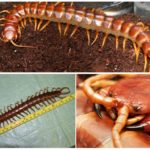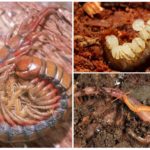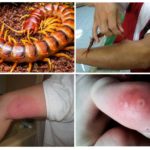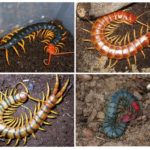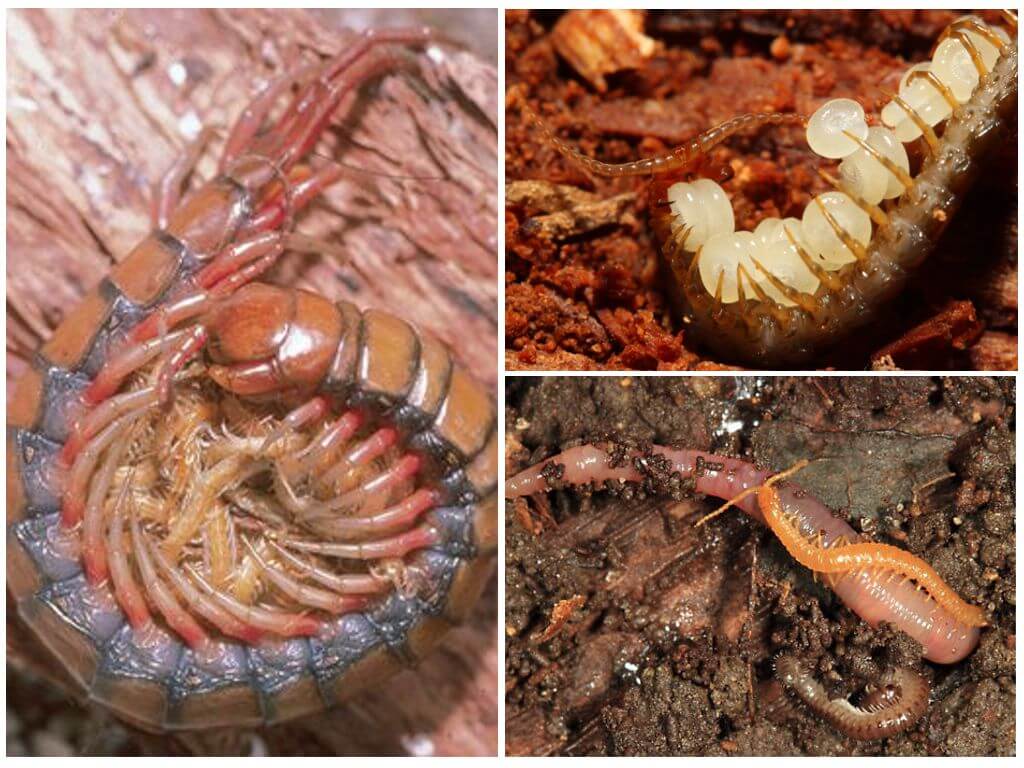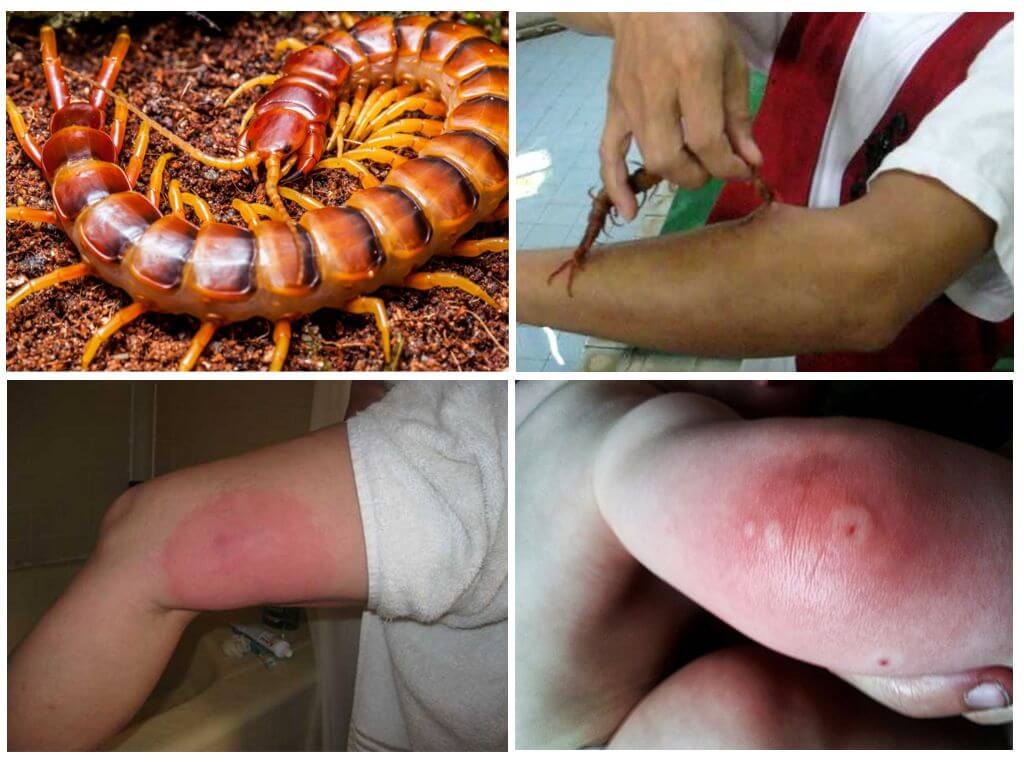Giant scolopendra
Content
- Giant scolopendra
- Scolopendra reproduction
- Centipede bite
- Scolopendra species
Scolopendra belong to the most dangerous animals in the world because of aggressiveness and ability bite those around you with your poisonous jaws. Many people fear them because of an unpleasant repulsive look. The most dangerous poison is released by the giant skolopendra, which lives on the American continent.
Biological description
Scolopendras belong to the genus of foot-legged centipedes, the Skolopendry order, numbering about 90 species. The body consists of 21-23 segments, each of which contains a pair of legs ending in sharp spikes. In some species, the poisonous glands are located near all legs, in others only in the front ones.
The head looks like a plate with eyes, there are 2 tendrils and 2 poisonous claws, into which the front legs were transformed. The back pair of legs differs from the others in a greater length and direction, playing the role of an anchor when moving along the ground and during hunting.
The body consists of plates fastened with flexible membranes, outside protected by a chitinous exoskeleton. Scolopendra shed periodically, i.e., they discard the old cover, and the new one forms a larger one.
On a note!
Giant individuals are thermophilic and live in places with a tropical or subtropical climate. On the territory of Russia, they are found exclusively in the southern regions and are considered harmless to humans.
Huge skolopendry are night predators, which in the daytime sit in secluded places (in burrows under the ground, under stones, among plants, etc.), preferring wet shelters. After all, their body due to lack of protection loses moisture quickly enough.Due to the large number of legs, giant creatures move very quickly.
Giant skolopendry
The largest representatives of Scolopendra are found in the western and northern parts of South America, on Fr. Jamaica and Trinidad. The body color of the giant skolopendra has shades from copper-red to brown, although there are red, green, blue and purple specimens. The legs are yellow. The anterior mandibles originated in the process of evolution from the usual paws, they are connected to the glands that release poison. Due to the fact that her body is flat and the shell is dense, it is very difficult to destroy a huge insect mechanically.
Interesting!
The world's largest scolopendra has a length of 30 cm, but in nature their average size ranges from 20 to 26 cm.
Huge centipedes feed on invertebrates: larvae, earthworms, beetles. Giant skolopendry quite successfully hunt small birds, frogs, lizards, mice, small snakes and even bats. The way of catching the latter is distinguished by originality: the predator climbs along the wall of the cave to the ceiling, being held by claws.With the help of the front paws, the prey is attacked and held, and poison is simultaneously introduced, which paralyzes the victim.
Interesting!
Huge scolopendras like others centipede species, able to grow new legs to replace the lost.
The process of digesting food from a giant skolopendra is very slow and long, with interruptions. Mining is broken down in the stomach with the help of enzymes.
Breeding
In their habits, giant skolopendry relate to individualists. Fights between them are rare, but when clarifying the relationship they cling tightly to each other and are in that position until the death of one of the rivals.
Females reach puberty by 2.5-3.5 years. Reproduction occurs in the spring, and, due to the presence of parthenogenesis, they can fertilize the eggs themselves. During childbirth and later females allocate a special secret that prevents the appearance of mold on the eggs laid, and also helps to preserve the necessary moisture. After a few weeks, small protonymphs appear that look like worms, they grow quickly: after 5-6 weeks the coloring begins to appear, then after 10-14 days the first molt passes.
Interesting!
The life cycle of huge scolopendr makes it possible to attribute them to long-livers, because in captivity some specimens live to 7 years.
The danger of poison huge skolopendry
The poison of the giant scolopendra is fatal for small animals, and for humans it is a powerful toxin, causing symptoms of severe pain, swelling not only of the bitten place. For example, if you bite a hand, the entire limb increases to the shoulder, swollen, sore for 2-3 hours, there are signs of inflammation and toxication: chills, fever, weakness, etc.
The poison of the huge centipede contains chemicals: acetylcholine, serotonin, lecithin, histamine, thermolysin, hyaluronidase. When it is cold, it retains its properties, and when heated or under the action of alcohol and alkali it is destroyed.
Important!
The bite of giant scolopendra is especially dangerous for children and adults with a weakened immune system or an allergic reaction of the body. There is only one fatal case in the world that occurred in China with a child who was bitten by a huge skolopendra in the head.
This giant centipede bites everybody at the slightest threat due to the fact that it has very poor eyesight, which distinguishes only light and darkness. Most often, it attacks a person, if you take her in hand, or pin down.There are cases when a huge centipede can run through the body completely harmless to humans, but the burn remains from the trail that it leaves behind.
Other types of huge scolopendr
Different types of giant centipedes differ in body structure, length, living conditions, and habitat. Dimensions and body color in all species differ: from brown to blue, green or red.
- California green skolopendra is found in the southwestern states of America and in the north of Mexico. A huge individual grows up to 16-20 cm. After touching it, a person can get burned due to the fact that there is a poisonous substance on her legs that causes skin irritation.
- Chinese redhead scolopendra lives in the regions of East Asia and Australia. Its difference from their relatives is the ability to live in communities. Chinese females can even raise offspring, protecting the eggs with their bodies until hatching. In ancient Chinese medicine, giant centipedes were used to treat certain diseases. So, there is a belief about the ability to accelerate the healing of wounds when the head of the scolopendra is in contact with a sore spot.on the skin.
- Ringed huge centipedes have a bright yellow body, common in southern Europe, 10-15 cm in size. When touched with the legs, the insect leaves a burn on the body in the form of a small red rash that lasts for several hours.
- Vietnamese skolopendra grows up to 15-20 cm, has an aggressive nature, the body is bright blue or purple. The huge centipede emits poisonous mucus that has the smell of phosphorus, it causes burns and inflammation of the skin.
Content in home terrariums
Giant skolopendry in recent years have become popular "pets" among lovers of exotic and invertebrates. They are kept in a high terrarium of sufficient size with a lid on top so that the pet does not accidentally jump out of its housing.
For a comfortable existence, it is important to maintain the necessary humidity, as well as the presence of a drinker with separated water. Content temperature: from 17-10 at night to 20-22ºС. They feed giant centipedes with large cockroaches, small frogs and lizards quite rarely: according to specialists of one mouse or 5-6 cockroaches, they have enough to feed for 1 month.
When maintaining and caring for such huge pets, it is recommended to be careful and take special measures to prevent them from escaping from the terrarium.

